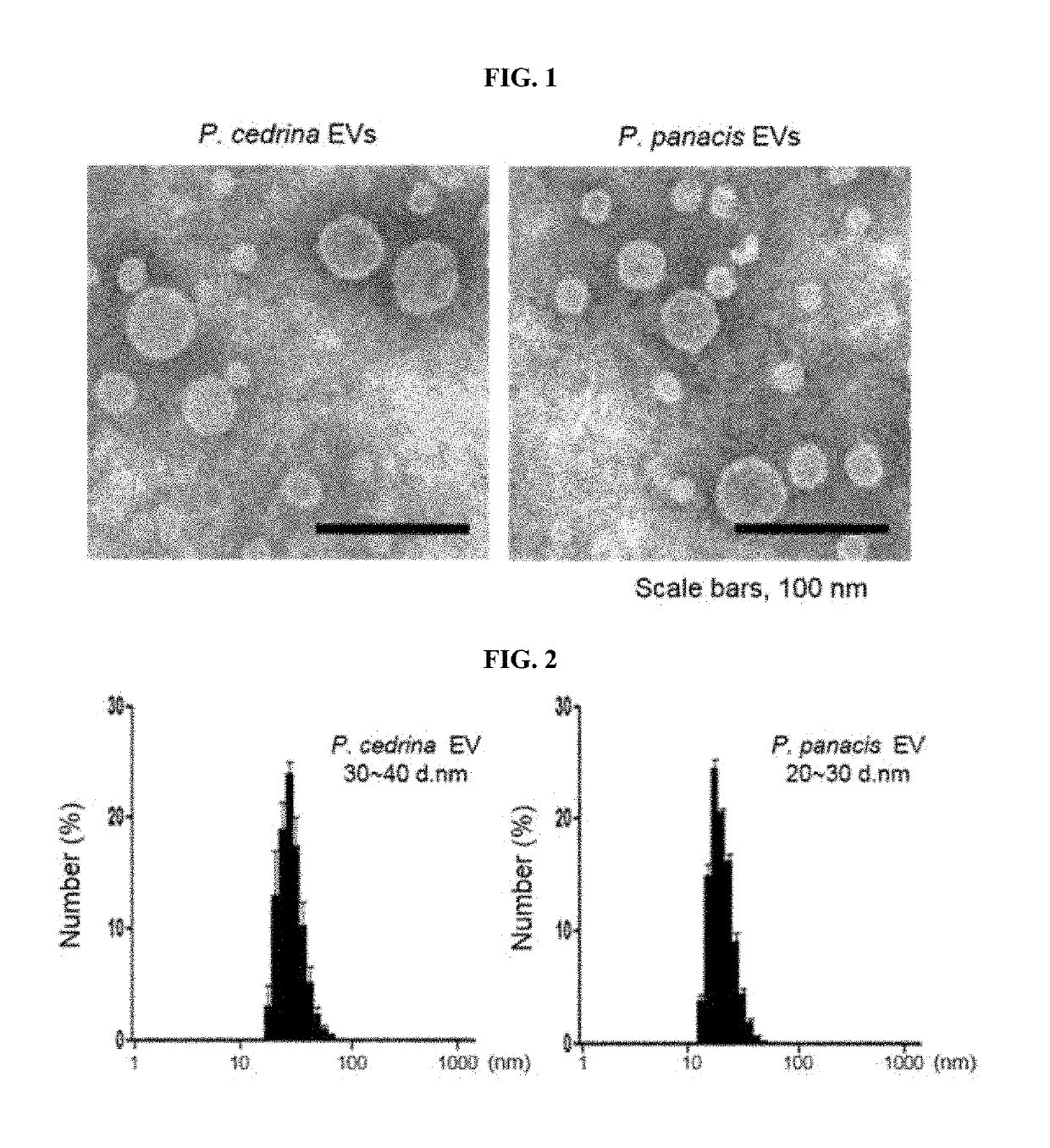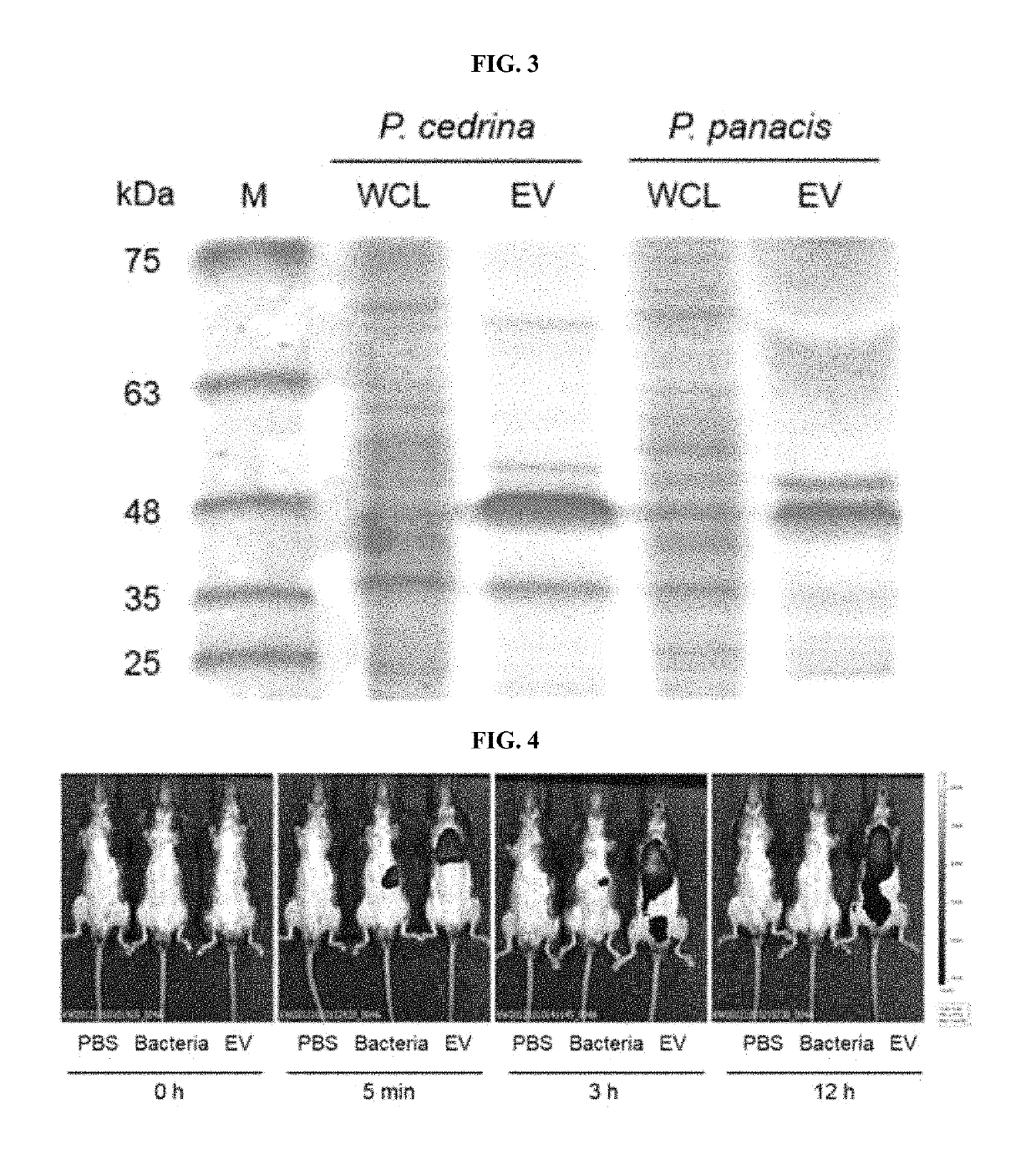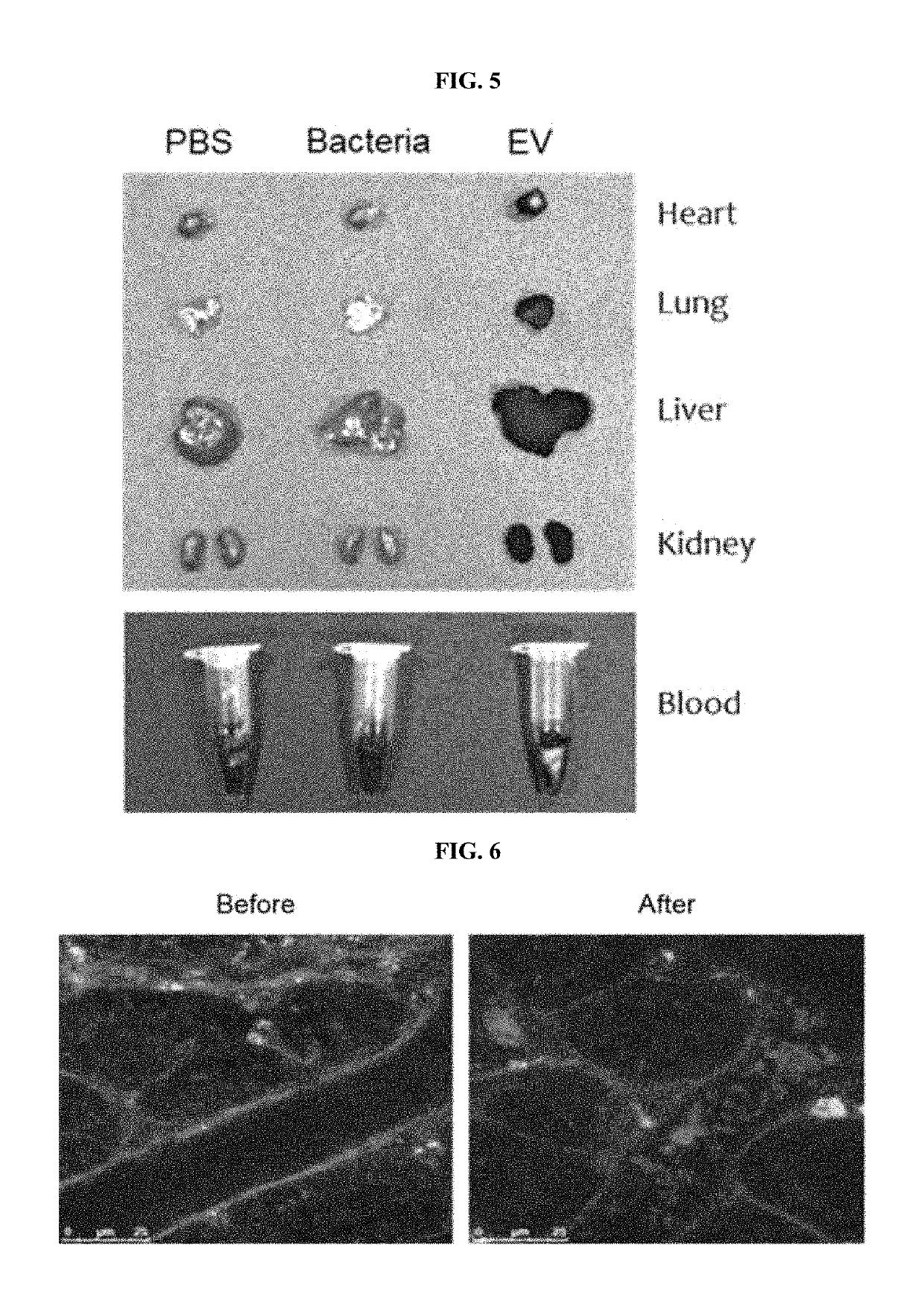Method of treating an inflammatory disease using lactic acid bacteria-derived extracellular vesicles
a technology of extracellular vesicles and lactic acid bacteria, which is applied in the direction of drug compositions, aerosol delivery, spray delivery, etc., can solve the problems of insufficient explanation of recent growth trend and metagenomic analysis
- Summary
- Abstract
- Description
- Claims
- Application Information
AI Technical Summary
Benefits of technology
Problems solved by technology
Method used
Image
Examples
example 1
of EVs Derived from Entrobacteria and Characteristic Evaluation
[0117]EVs were isolated from enterobacteria strains such as P. cedrina and P. panacis, and to analyze their characteristics, the two strains were cultured in Luria-Bertani broth (LB broth) at 30° C. and 25° C., respectively. Each bacterial culture was centrifuged at 5,000 g for 30 minutes twice to filter a supernatant using a 0.45 μm bottle-top filter (Corning), and then an eluted sample was concentrated using QuixStand™ (GE Healthcare Bio-Sciences AB). The concentrated sample was filtered once again using a 0.22 μm bottle-top filter (Corning) to isolate EVs, and a protein concentration of EVs was measured using a BCA assay (Thermo Scientific).
[0118]To observe the EVs isolated from the bacterial culture using an electron microscope, EVs in normal saline (PBS, 50 μg / ml) were placed on 300-mesh copper grids (Electron Microscopy Sciences), and stained with 2% uranyl acetate for 12 hours. Afterward, images were taken under a...
example 3
ic Analysis of Bacteria-Derived EVs Using Urine and Serum of Atopic Dermatitis Patient
[0126]3-1. Isolation of EVs from Urine and Serum of Atopic Dermatitis Patient
[0127]Based on the result that the absorbed bacteria-derived EVs are excreted in the urine and distributed in the blood according to Example 2, the bacteria-derived EVs present in the urine and the serum of an atopic dermatitis patient were isolated, and then DNA contained therein were extracted.
[0128]Among the patients visiting the Pediatric Allergy Respiratory Center of Soonchunhyang University, Seoul, atopic dermatitis patients up to the age of 17 years, which satisfy Hanifin and Rajka diagnostic criteria for atopic dermatitis, were targeted. Patients with other skin diseases or who had received topical, oral or injectable antibiotics within the last 14 days were excluded. As a normal control, infants not having any skin disorders including atopic dermatitis, allergic disease, a significant medical history and drug use ...
example 4
of Difference in Distribution of Bacteria-Derived EVs in Urine of Atopic Dermatitis Patient and Normal Person
[0138]A difference in distribution of the bacteria-derived EVs in the urine of the atopic dermatitis patient and the normal person was evaluated according to the methods of Examples 3-1 and 3-2.
[0139]FIGS. 12 to 16 show the results of the metagenome analyses at phylum, class, order, family and genus levels, respectively, and EV distribution in the urine sample of the normal person (control) is indicated by a blue underline, and EV distribution in the urine sample of the atopic dermatitis patient (case) is indicated by a red underline.
[0140]As a result, it was confirmed that there are significant differences in the distribution of bacteria-derived EVs in the urine of the atopic dermatitis patient and the normal person at all of phylum, class, order, family and genus levels. More specifically, as shown in FIG. 17 and Table 1 below, among bacteria-derived EVs present at 1% or mo...
PUM
| Property | Measurement | Unit |
|---|---|---|
| diameter | aaaaa | aaaaa |
| diameter | aaaaa | aaaaa |
| diameter | aaaaa | aaaaa |
Abstract
Description
Claims
Application Information
 Login to View More
Login to View More - R&D
- Intellectual Property
- Life Sciences
- Materials
- Tech Scout
- Unparalleled Data Quality
- Higher Quality Content
- 60% Fewer Hallucinations
Browse by: Latest US Patents, China's latest patents, Technical Efficacy Thesaurus, Application Domain, Technology Topic, Popular Technical Reports.
© 2025 PatSnap. All rights reserved.Legal|Privacy policy|Modern Slavery Act Transparency Statement|Sitemap|About US| Contact US: help@patsnap.com



